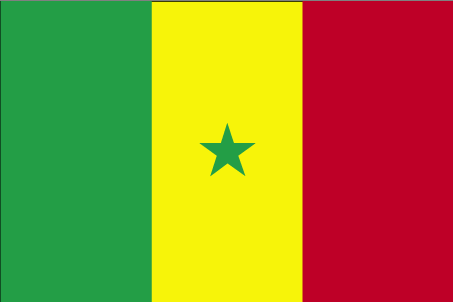To help inspire or plan your trip to Senegal, some of its major attractions
for travellers are shown below, including some of the best natural, historical, cultural and adventure sites in the country.
These include all of UNESCO World Heritage Sites for Senegal which represent the best
of the world's cultural and natural heritage.
Click on the icons below to focus on specific types of features
(click again to return to all).
|
|
|
|
|
|
|
|
|
|
|
|
 |
|---|---|---|---|---|---|---|---|---|---|---|---|
| Natural | History | Wildlife | Trekking | Cities | Religious Monument | Boat Journey | Rail Journey | Diving | Cultural | Adrenaline | UNESCO WHS |
| Island of Gorée | |
|---|---|
The island of Gorée, off the coast of Senegal opposite Dakar, is a small and peaceful island which was once the largest slave-trading centre on the African coast. Approximately 20 million Africans passed through the island on their way to the Americas between the mid-1500s and the mid-1800s. The architectural remains today include the grim and cramped slave quarters and the elegant houses of the slave traders. These now house museums and serve as a reminder of this shameful period of human exploitation. UNESCO World Heritage Site: Island of Gorée | |
| Djoudj National Bird Sanctuary | |
|---|---|
The Djoudj National Bird Sanctuary is one of the most important bird sanctuaries in the world. It covers 16,000 km² in the Senegal River Delta and provides a major water source for migratory birds after their long flight over the Sahara Desert. As many as 3 million birds fly through the sanctuary annually which includes species like the white pelican, the purple heron, the African spoonbill, the great egret, the Egyptian goose, the West African fish eagle and the cormorant. UNESCO World Heritage Site: Djoudj National Bird Sanctuary | |
| Niokolo-Koba National Park | |
|---|---|
Niokolo-Koba National Park covers 10,000 km² of Guinea savannah and gallery forest along the banks of the Gambia river and is the largest of Senegal's national parks. The park supports an incredible diversity of animal life including over seventy species of mammal, 300 bird species and numerous reptiles and amphibians. Notable species include chimpanzees, lions, leopards, elephants, giraffes and Derby's eland - the world's largest antelope species. UNESCO World Heritage Site: Niokolo-Koba National Park | |
| Island of Saint-Louis | |
|---|---|
Saint Louis is located on an island in the mouth of the Senegal River. Founded as a French colonial settlement, it served as Senegal's capital from 1872 to 1957. Saint Louis is characterised by 19th century French colonial architecture including the Governor's Palace and the Cathedral, around which is a regular town plan and a system of quays. UNESCO World Heritage Site: Island of Saint-Louis | |
| Langue de Barbarie National Park | |
|---|---|
Langue de Barbarie National Park is another excellent spot in Senegal for birdwatching. Species present include flamingos, pelicans, cormorants, herons and egrets as well as migratory birds from Europe between November and April each year. | |
| Saloum Delta National Park | |
|---|---|
The Saloum Delta is a protected reserve of waterways that provides excellent bird watching opportunities. The park consists of water channels, forests, mangroves and over 200 small islands which can be crossed on traditional pirogues. The site is also renowned for having over 200 shellfish mounds, up to several hundred metres long, which have been produced by human cultures throughout the ages, some of which have burial mounds atop them. UNESCO World Heritage Site: Saloum Delta | |
| Stone Circles of Senegambia | |
|---|---|
The stone circles of Senegambia comprise 93 separate circles along 350 kilometres of the River Gambia. They are clustered into four main groups - Wassu, Wanar, Sine Ngayene and Kerbatch. Each circle contains between 8 and 14 stones, cylindrical or polygonal in shape, between 1 and 2.5 metres high and weighing up to 7 tonnes. They are thought to be dated between the third century BC and the sixteenth century AD though little is known about the society that produced them. UNESCO World Heritage Site: Stone Circles of Senegambia | |
| Bassari Country Cultural Landscapes | |
|---|---|
This landscape in south-east Senegal testifies to the cultures of three peoples, the Bassari, Fula and Bedik, who settled here between the 11th and 19th centuries and their interaction with the surrounding natural envirnoment. The site includes distinctive villages and archaeological sites, as well as agro-pastoral, social, ritual and spiritual practices, which represent an original and still vibrant local cultures. UNESCO World Heritage Site: Bassari Country: Bassari, Fula and Bedik Cultural Landscapes | |


